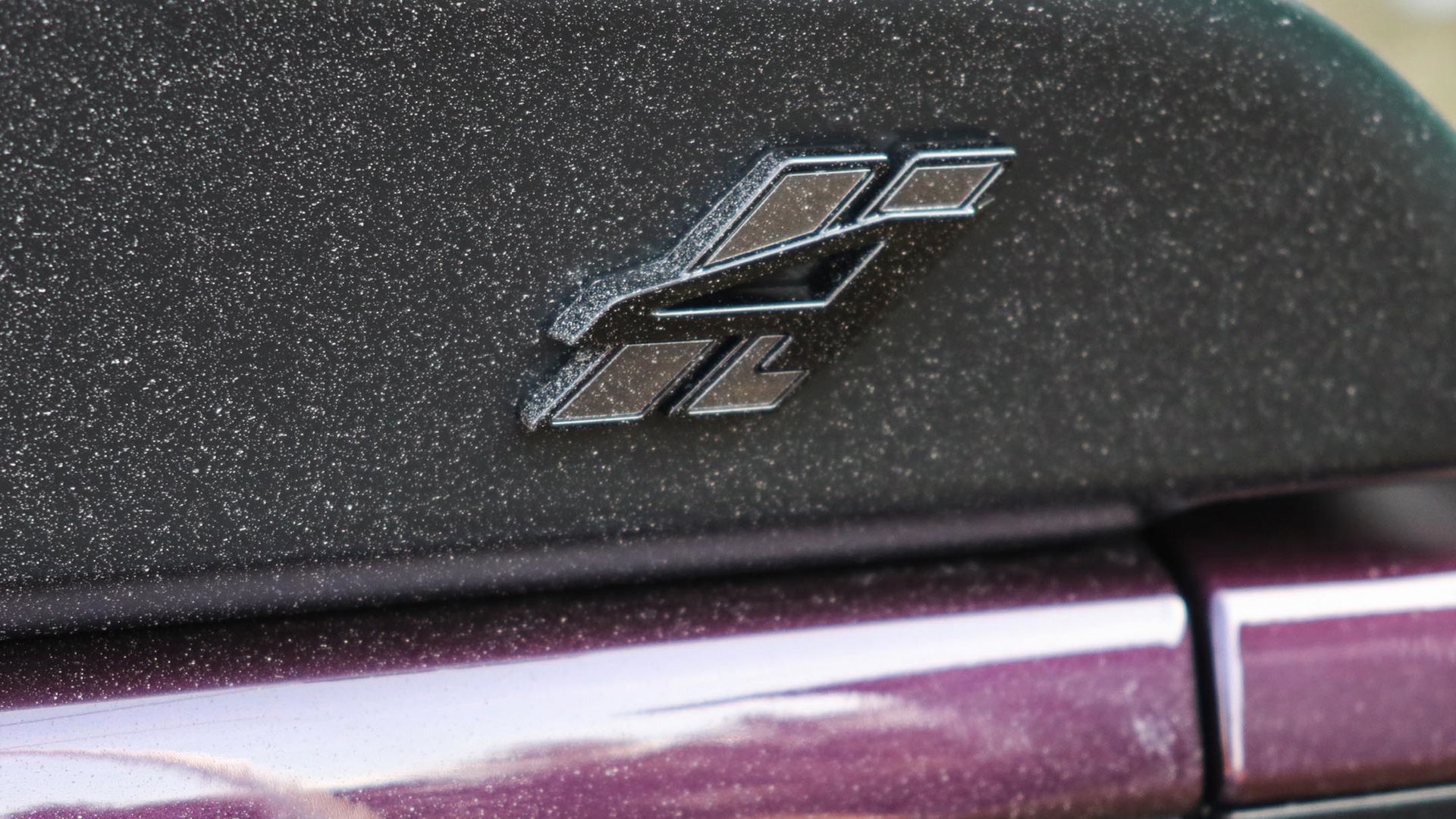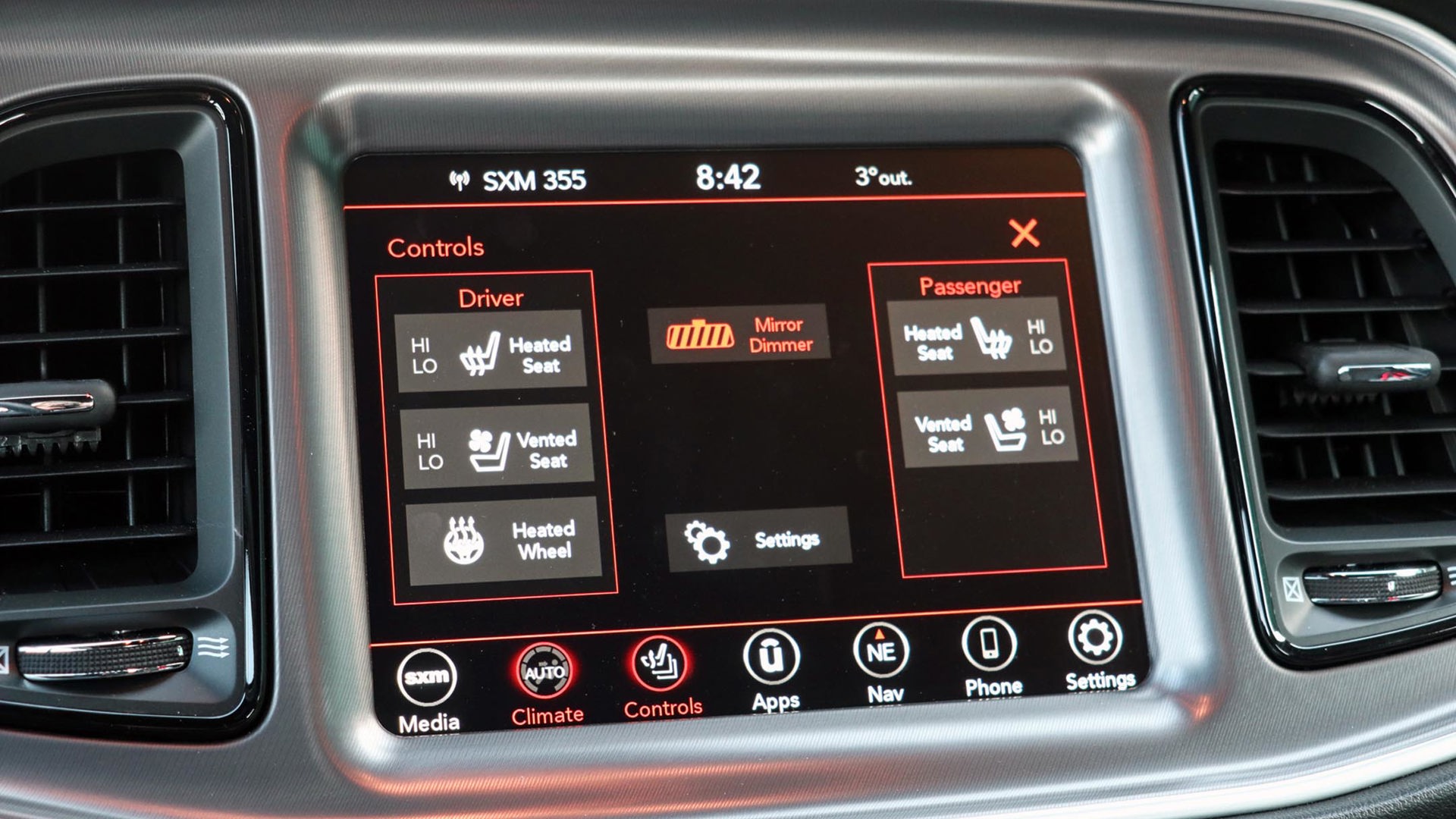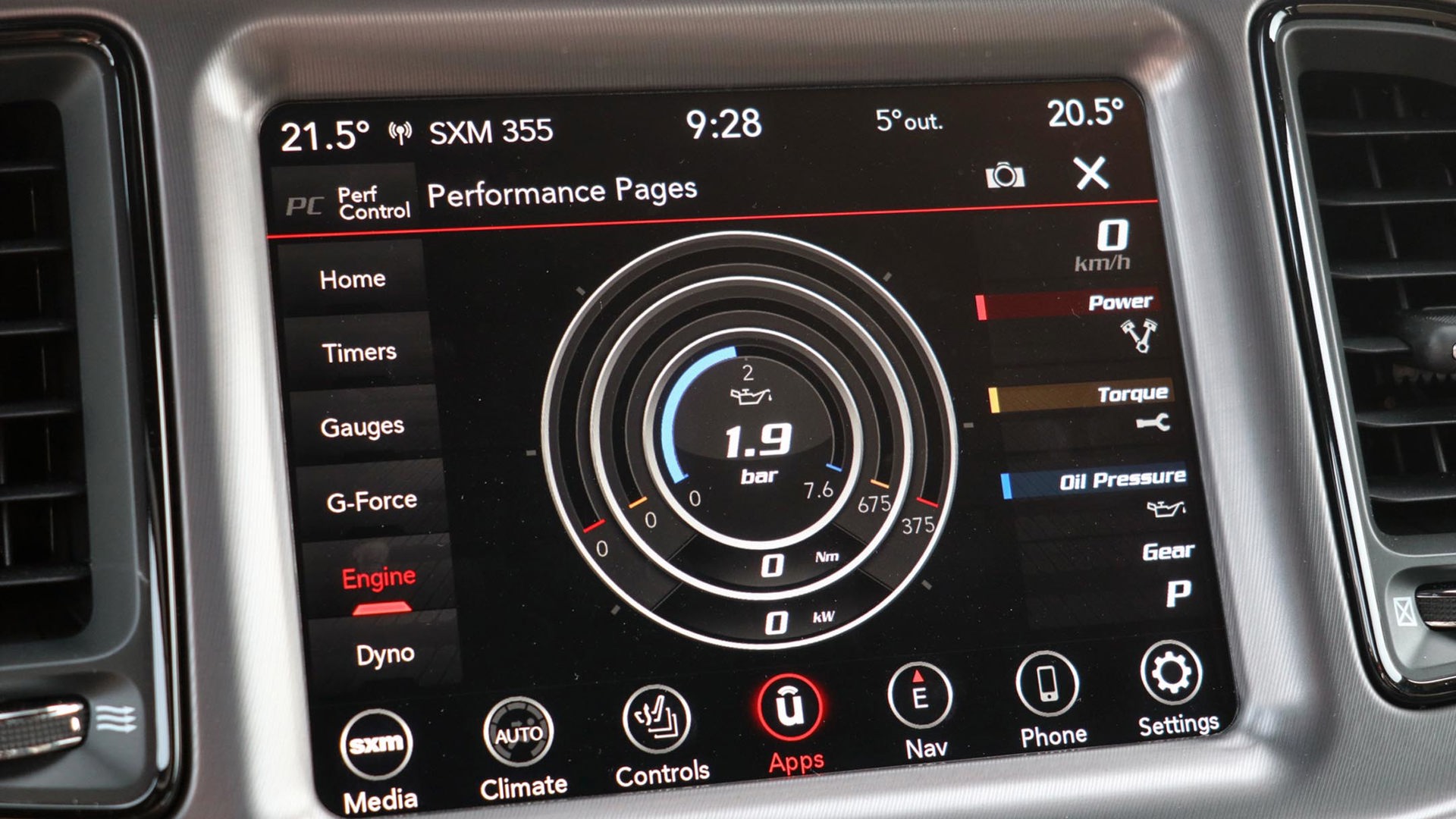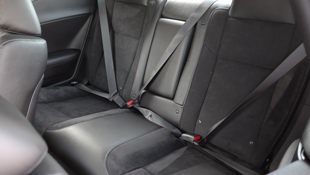 AutoTrader SCORE
AutoTrader SCORE
-
STYLING9/10
-
Safety8/10
-
PRACTICALITY8/10
-
USER-FRIENDLINESS8/10
-
FEATURES8/10
-
POWER9/10
-
COMFORT8/10
-
DRIVING FEEL7/10
-
FUEL ECONOMY7/10
-
VALUE7/10
Every fan of American muscle knows the triumvirate is the Ford Mustang, Chevrolet Camaro, and Dodge Challenger.
You can get the latter with nearly 800 hp these days, but I had it as the far more subdued 2021 Dodge Challenger GT AWD. It’s powered by a V6, and while it’s obviously no SRT, it’s also no slouch. It starts at $40,895 before freight and tax, but my tester was loaded up with several available options, and that took it to $48,870 before those non-negotiables.
Styling: 9/10
Of the three American muscle cars, the Challenger seems closest to the original, but its designers also had an easier task. The Mustang never went out of production, and the Camaro went through four generations before being discontinued and then reinstated. But the Challenger arrived for 1970 and lasted only four years before soaring oil-embargo gas prices finished it off. (There was only one old model for the new one to emulate, since we’re choosing to ignore the rebadged Mitsubishi of the late ’70s and early ’80s.)
The designers nailed it, from the go-fast face to the unmistakable back end, and it still looks good in its 14th year on the market spent mostly unchanged. For 2021, larger 20-inch wheels are optional on the SXT AWD trim level, and standard on my GT AWD – although mine were then swapped out for optional black ones.
I’m not quite as enamoured with the wavy dash and centre console, which looks like something melted in the sun, but the look does play up the driver-centric focus. Everything’s for behind the wheel, and if you’re the passenger, sit tight and enjoy the ride.
Safety: 8/10
As sometimes happens, the United States National Highway Traffic Safety Administration (NHTSA) and the Insurance Institute for Highway Safety (IIHS) don’t reach a consensus. The NHTSA gives the Challenger the top five-star overall crash rating, while the IIHS awards its top “Good” only for moderate front overlap and side crash; “Acceptable” for roof strength, and head restraints and seats; and “Marginal” for driver’s front small overlap crash.
Muscle cars are meant for serious drivers, so the range of advanced safety technologies is slimmer than in a family-style people-mover. You also can’t just add a straight pack of them. To get blind-spot monitoring – which you’ll want, given that the thick C-pillars and head restraints limit shoulder checks – you need a $1,095 package that also includes heated mirrors and upgraded headlights; further adding adaptive cruise control, emergency front braking, and automatic high-beams is another $895 bundle.
Features: 8/10
Muscle car fans know how it works: you’re paying for performance, and goodies come on the à la carte menu. So the GT comes with those aforementioned 20-inch wheels, plus such items as rain-sensing wipers, dual-zone automatic climate control, automatic headlights, remote starter, garage door opener, Apple CarPlay and Android Auto, tire pressure monitoring system, and, as is mandatory on all new vehicles, a back-up camera.
Other than my car’s stand-alone power sunroof and side stripes, features came bundled. A Blacktop package added my blacked-out trim; another produced navigation; while a Preferred Plus group, at $2,645, gave me a long list including heated and ventilated seats, a power-adjustable heated steering wheel, upgraded stereo, and stitched dash.
User Friendliness: 8/10
Low-slung coupes always come with climbing in and out, and remembering not to open those long doors too wide in parking lots. Once you’re past that, the Challenger delivers a relatively user-friendly experience. About the only really sour notes are the exterior handles. You pull them up, but they’re shallow and wedge-shaped, so you use your fingertips and it’s tough when they’re slippery with rain or snow.
At first glance, the shifter looks like one of those awful push-pull electronic units, but it’s actually the real-deal pull-it-back variety. The infotainment system remains one of the industry’s best to use, and most climate functions are handled by buttons and dials, but I do wish the heated seats and steering wheel were also physical controls rather than on-screen icons.
Practicality: 8/10
It might seem a high score for a two-door with practically no rear-seat room, but the Challenger must be judged on what it is, and that’s a big vehicle with a lot of front-seat leg- and headroom. I find visibility to be better in the Mustang, and worse in the Camaro.
It has more cabin volume than those two, and a 459-L trunk, compared to 382 for the Mustang, and just 257 under the trunk lid of a Camaro. The Challenger is the only one of the three available with all-wheel drive, and if necessary, the GT AWD can tow 454 kg (1,000 lb).
Comfort: 8/10
Along with space, at least for those up front, the Challenger offers long-distance seat comfort. My chairs were clad in leather and faux suede, and with heating and ventilating functions. If adults squeeze into the back, they won’t get much legroom, but the seats themselves are comfy. The Challenger also hands over a fairly smooth ride for its category, and you don’t hear too much in the way of wind or road noise.
Power: 9.5/10
You might think this sounds like utter bovine deposits, but when I first snapped the accelerator I thought I’d been given a V8. The strong, immediate response from this 3.6L V6 can feel like two extra cylinders under that hood. Being a fan of naturally aspirated engines, I also like that it’s not a turbocharged four-banger, too.
This V6 makes 303 hp and 268 lb-ft of torque, and does a good job despite having to motivate 1,847 kg (4,078 lb) of all-wheel-drive coupe around. The transmission is an eight-speed automatic. The V8 doesn’t come with AWD, so if you want it – or want to stay lower on the price ladder – there’s absolutely no shame in this six-cylinder.
Driving Feel: 7/10
The Mustang is agile; the Camaro is tossable; and the Challenger hearkens back to early American muscle, when cars were really good at a straight line. That’s not to say this Dodge is a dud when you spin the wheel, but you get some body roll on turns, and you definitely feel the car’s heft.
In normal conditions, the front axle disengages to reduce fuel consumption. When traction is required, as much as 38 per cent of torque is immediately sent to the front wheels. The transmission can be sequentially shifted using paddles or the shifter; sport mode shifts faster and holds the revs longer; there are three stability control settings, including full-off; and with my tester’s Super Track Pak and Performance Pages, you can activate launch control, customize steering feel, set timers, and monitor power and G-force.
Fuel Economy: 7.5/10
You play, you pay. The V6-powered Challenger with all-wheel drive is rated by Natural Resources Canada (NRCan) at 12.8 L/100 km in the city; 8.7 on the highway; and 11.0 in combined driving. I came in much higher at 14.4 L/100 km. The V6 in rear-wheel-only rings in at a combined 10.3 L/100 km.
By contrast, a V6-powered Camaro officially comes in at 10.7 L/100 km combined. Mustang no longer offers a V6, and its turbocharged four-cylinder is rated at 9.4 L/100 km – both of those cars in rear-drive only, of course.
Value: 7/10
The Challenger is the priciest among competitors, starting at $35,295 for an SXT in two-wheel drive with V6. A turbo-four Mustang with automatic transmission begins at $33,495, while a V6 Camaro in starter trim is $33,743.
For all-wheel drive, trim levels are the SXT at $38,695, and my GT at $40,895. Each driver will tick different option boxes, and of course your final figure will depend on how much you want to add.
The Verdict
All of the muscle trio have their strengths and weaknesses. I think you get the most bang for the buck with Mustang; the Camaro handles very well; and the Challenger has a great V6 engine, retro looks, and to me, more in-your-face swagger. No matter which way you go, it’s nice to see the trio back together again.
| Engine Displacement | 3.6L |
|---|---|
| Engine Cylinders | V6 |
| Peak Horsepower | 303 hp @ 6,350 rpm |
| Peak Torque | 268 lb-ft @ 4,800 rpm |
| Fuel Economy | 12.8 / 8.7 / 11.0 L/100 km cty/hwy/cmb |
| Cargo Space | 459 L |
| Model Tested | 2021 Dodge Challenger GT AWD |
| Base Price | $40,895 |
| A/C Tax | $100 |
| Destination Fee | $1,895 |
| Price as Tested | $50,865 |
|
Optional Equipment
$7,975 – Hellraisin paint, $100; Preferred Package Plus of Nappa leather and Alcantara heated and ventilated seats, ambient door trim lighting, stitched dash, Performance Pages, driver’s side memory, power-adjustable heated steering wheel, Alpine speakers, 276-watt amplifier, HD radio, 8.4-inch touchscreen, satellite radio, Wi-Fi hotspot, and bright pedals, $2,645; Technology Group of automatic high-beams, forward collision warning, and adaptive cruise control, $895; Blacktop Package of black interior and exterior trim and 20-inch Black Noise wheels, $475; Driver Convenience Group of body-colour heated mirrors, HID headlamps and blind-spot monitoring, $1,095; Power sunroof, $1,495; V6 bodyside stripes, $475; Uconnect navigation with Sirius Traffic and Travel, $795
|
|













































